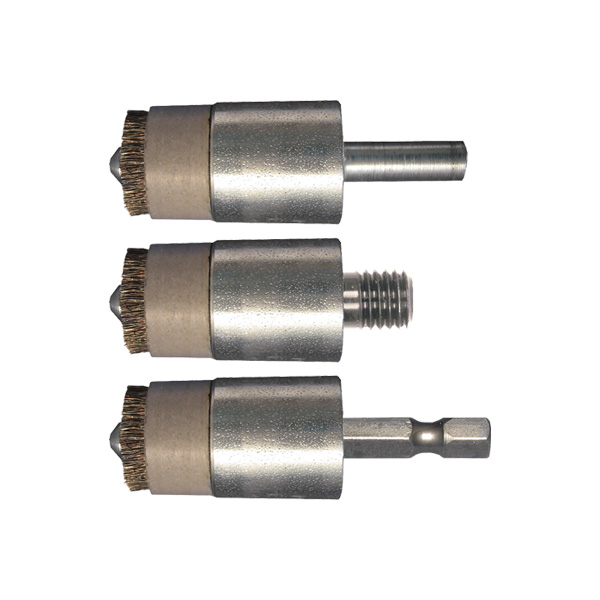I understand about the rubber hose interrupting the ground at the wing roots, but I have installed aux tanks with Facet pumps between the aux and main tanks. Would that not ground both the aux and main tank through the aluminum fuel line to the Facet pump with is mounted to a wing rib?
Announcement
Collapse
No announcement yet.
Fuel Tank Ground
Collapse
X
-
After pondering this thread, I ended up just using an AN742-D16 clamp on the outlet bung of each tank (with No-Ox applied to all mating surfaces). Equivalent to post #28 but saved me a bit of fab time vs making my own clamp out of scrap (which I have plenty of!).
. IMG_4515.jpgLast edited by Dpearson; 04-19-2024, 12:41 AM.
- Likes 3
Comment
-
How I did mine. I welded tabs to all four tanks: http://www.mykitlog.com/users/displa...=280695&row=20
- Likes 1
Comment
-
Per AC 43-13B:
11-191. FUEL SYSTEMS. Small metallic
objects within an aircraft fuel tank, that are not
part of the tank structure, should be electrically
bonded to the structure so as to dissipate static
charges that may otherwise accumulate on
these objects. A practical bonding design
would use a flexible braided jumper wire or
riveted bracket. In such situations, a DC resistance
of 1 ohm or less should indicate an
adequate connection. Care should be taken, in
designing such connections, to avoid creating
continuous current paths that could allow
lightning or power fault currents to pass
through connections not designed to tolerate
these higher amplitude currents without arcing.
Simulated static charge, lightning, or fault current
tests may be necessary to establish or verify
specific designs. All other fuel system
components, such as fuel line (line to line) access
doors, fuel line supports, structural parts,
fuel outlets, or brackets should have an electromechanical
(bonding strap) secure connector
that ensures 1 ohm or less resistance to the
structure. Advisory Circular 20-53A Protection
of Aircraft Fuel Systems Against Fuel Vapor
Ignition Due to Lightning, and associate
manual DOT/FAA/ CT-83/3, provide detailed
information on necessary precautions.
Comment
-
OK, I need a layman’s explanation.
Luckily BrokenStraw brought this to my attention as I missed it in the build process. I have braided ground material that I used to ground the engine to the fuselage. If I put an adel clamp on the fuel tank and use this braided material, what should I attach it to? A wing rib? I am at a total loss on this. Please help as this has come up just in time for me to get it done prior to hanging wings.N678C
https://eaabuilderslog.org/?blprojec...=7pfctcIVW&add
Revo Sunglasses Ambassador
https://www.youtube.com/channel/UCQ0...tBJLdV8HB_jSIA
Comment
-
I would use a three inch long piece of 20 awg tefzel wire and crimp on PIDG ring terminals on each end. One ring for 3/16” bolt on the loop clamp. One for #6 machine screw. I then would drill a 9/64” hole in the wing rib and attach the wire to it. Then check it for continuity. Keep it small simple and light.
if you don’t have a crimper, PIDG terminals, or wire lying around wait on it until you do your electrical. You’ll have all that stuff in your inventory then.Brooks Cone
Southeast Michigan
Patrol #303, Kit build
- Likes 1
Comment
-
In addition to what Brooks said, make sure the area on the tank and rib is free of any crud or paint. They have bonding brushes specifically designed for this purpose, but a bit of sandpaper will do. Put some dielectric grease on each surface when you put it together and you're good to go.
 Stainless steel brushes designed to remove corrosion, paint and other contaminants from rivet hole area. Assures positive electrical contact it eliminate static electricity. Made with special ring to provide a more rigid surface area. These brushes are used primarly for aircraft assembly and in the aerospace industry.
Stainless steel brushes designed to remove corrosion, paint and other contaminants from rivet hole area. Assures positive electrical contact it eliminate static electricity. Made with special ring to provide a more rigid surface area. These brushes are used primarly for aircraft assembly and in the aerospace industry.
Comment
-
I didn't use this, but I saw an all metal Adel clamp onto a hard fuel line. Clean the oxidation off the line and cad plating or whatever off the clamp. Seemed like an easy solution. Check anything you do with a multimeter for continuity/resistance.
Comment


Comment